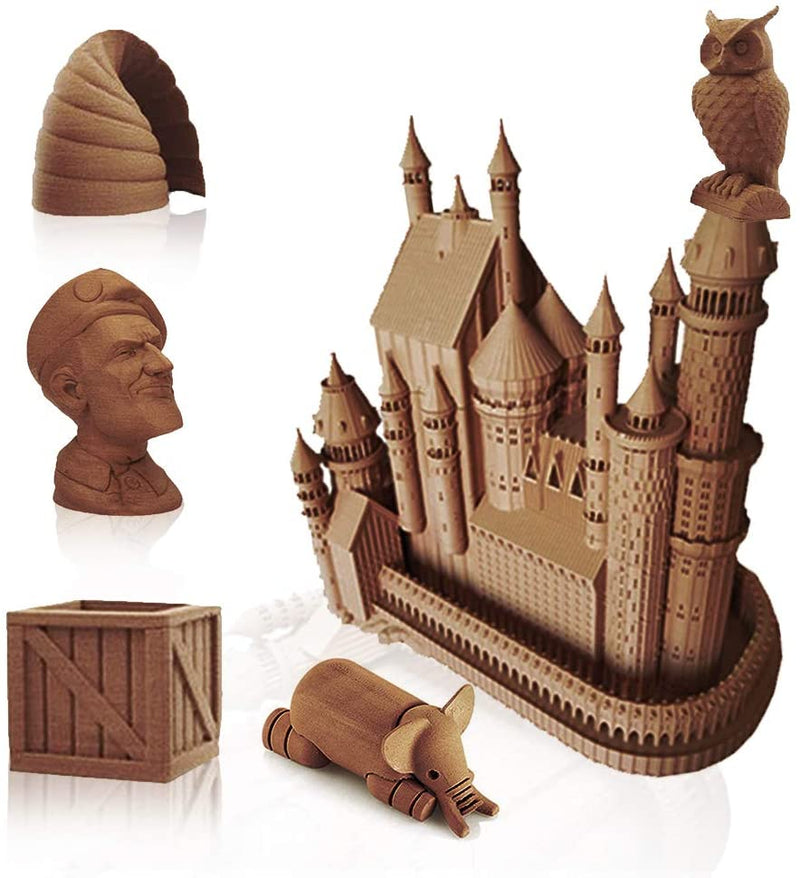Unlock the Secrets of Wood Filament: Transform Your 3D Printing Game!
3D printing has taken the world by storm, allowing creators, hobbyists, and professionals to bring their imaginative ideas to life. Among the various materials available for 3D printing, wood filament stands out for its unique properties and aesthetics. This innovative material, a blend of plastic and wood fibers, offers the warmth and appearance of wood while maintaining the flexibility and ease of use of conventional filaments. As someone who has dabbled in various 3D printing materials, I can personally attest to the charm of wood filament. It not only allows for stunning visual results but also provides a satisfying tactile experience. In this article, we will explore the intricacies of printing with wood filament, covering essential techniques, preparation steps, and best practices to ensure you get the most out of your 3D printing endeavors.

Understanding Wood Filament
Wood filament is a specialized 3D printing material made from a combination of thermoplastic polymers and finely ground wood particles or fibers. This unique composition gives it characteristics that set it apart from traditional filaments, such as PLA or ABS. One of the most appealing aspects of wood filament is its ability to mimic the look and feel of real wood, allowing for prints that boast a natural appearance and texture. This is particularly appealing for creators looking to produce decorative items, art pieces, or even functional objects that require an aesthetic touch. Additionally, wood filament is often considered an eco-friendly option, as it incorporates renewable resources and can be biodegradable, making it a more sustainable choice for environmentally conscious users. The blend of materials also tends to produce less plastic waste, which is a significant advantage in today's world of increasing environmental awareness.
Preparing for 3D Printing with Wood Filament
Before diving into a project with wood filament, proper preparation is essential to ensure a smooth printing experience. First, it’s crucial to adjust your printer settings according to the specific requirements of wood filament. Generally, a larger nozzle size, typically around 0.4mm or larger, is recommended to accommodate the wood particles and prevent clogging. Additionally, you should set the printing temperature between 190°C and 220°C, as this range allows for optimal melting of the filament. Bed preparation is equally important; using a heated print bed can help minimize warping and improve adhesion. A layer of glue stick or painter's tape on the print bed can also enhance adhesion, ensuring that your print stays securely in place throughout the process. Some of my friends have shared that they often experiment with different bed surfaces, including glass or PEI, to find what works best for their specific setup.
Techniques for Successful Printing
To achieve the best results when printing with wood filament, several techniques can be employed. One key factor is adjusting the print speed; while faster speeds might work for standard materials, wood filament typically benefits from slower print speeds to allow for better layer adhesion and detail retention. It’s advisable to keep the speed between 30 to 50 mm/s for optimal results. Another technique to consider is utilizing a cooling fan; however, it’s best to use it sparingly to prevent the filament from becoming too brittle. Post-processing methods can also enhance the final appearance of your prints. Sanding with fine-grit sandpaper can create a smooth wooden finish, while applying a stain or varnish can further enrich the wood-like look. I recall a project where I crafted a wooden phone stand; after sanding and staining, the final product looked like it was carved from solid wood!
Common Challenges and Solutions
While printing with wood filament can be rewarding, it’s not without its challenges. One common issue is clogging, which can occur due to the wood particles in the filament. To mitigate this, ensure your nozzle is clean and consider using a larger nozzle size as mentioned earlier. Another challenge is warping, which can affect the print’s adherence to the bed. If you notice warping, increasing the bed temperature or using a brim can help improve adhesion. Additionally, keeping your filament dry is crucial, as moisture can lead to bubbling and inconsistent extrusion. I learned this the hard way when a friend’s print failed due to damp filament. Using a filament dryer or storing it in airtight containers can significantly enhance print quality. By understanding these challenges and implementing practical solutions, you can ensure a more successful printing experience.
Final Thoughts on Wood Filament
In conclusion, wood filament offers a unique and exciting avenue for 3D printing enthusiasts to explore. Its distinctive properties, from the beautiful aesthetic it provides to its eco-friendly advantages, make it a worthwhile material to experiment with. By understanding the preparation steps, employing effective printing techniques, and being aware of common challenges, you can elevate your 3D printing projects to new heights. I encourage you to dive into the world of wood filament and unleash your creativity—who knows what stunning pieces you might create!








